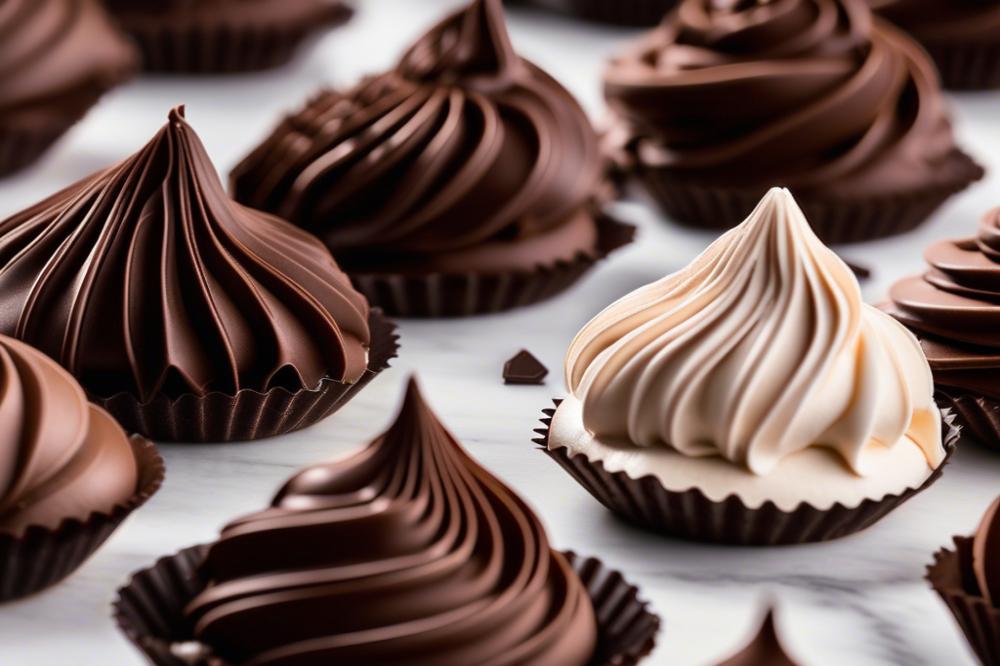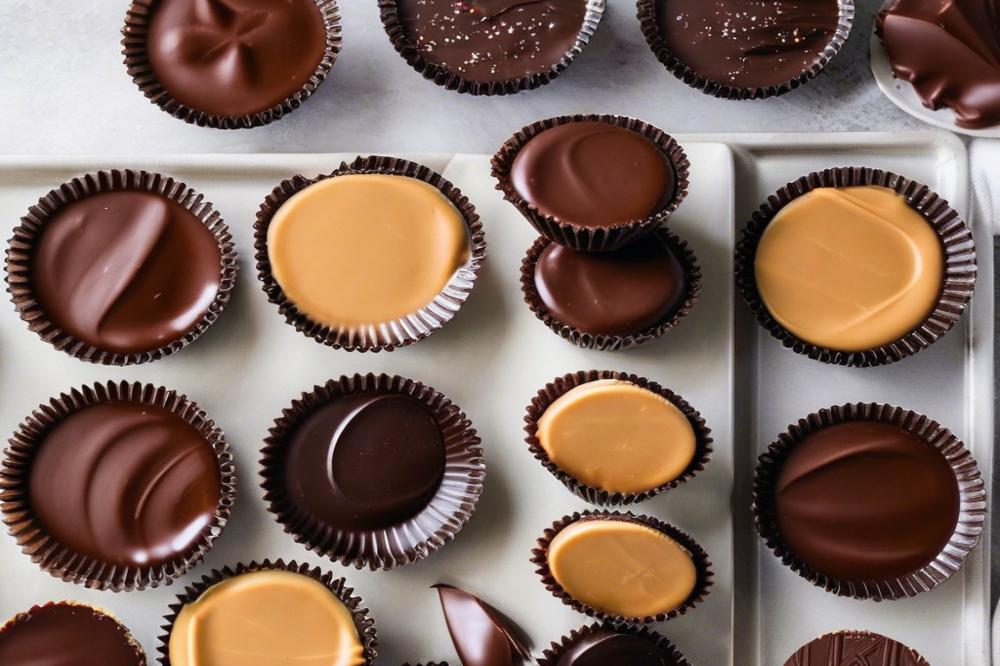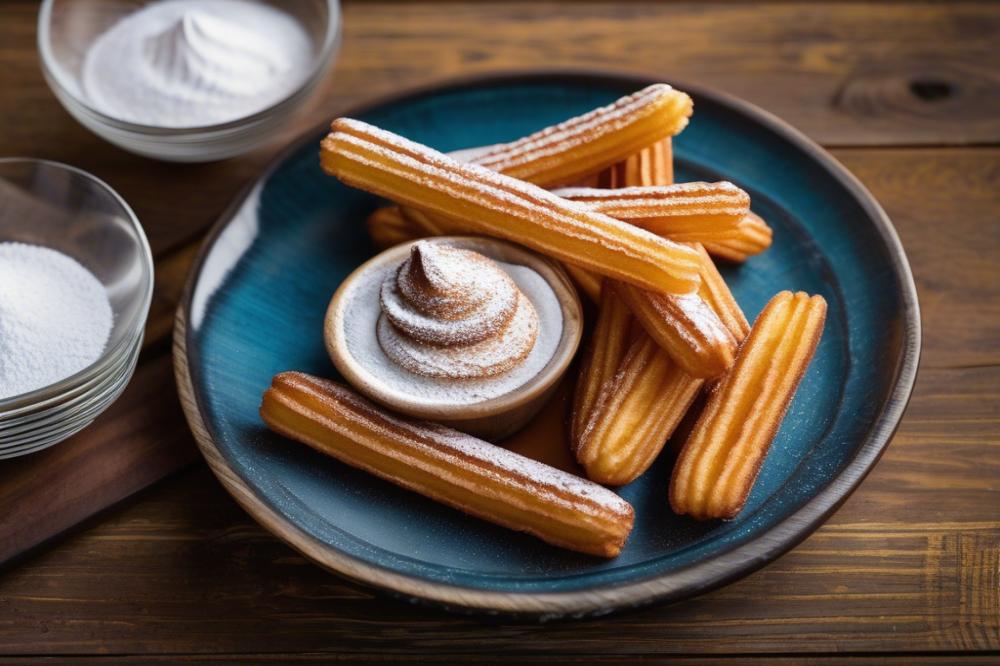Introduction
baking-chocolate-babka-at-home”>chocolate meringue cookies are a delightful treat that combines rich chocolate flavor with a light, airy texture. These cookies stand out because of their fascinating balance between crispness and chewiness. When you’re making meringue, the key ingredient is egg whites, which whip into soft peaks when beaten. Adding sugar creates a sweet, glossy mixture that bakes into something truly special.
A crisp texture is important in meringue recipes. It gives the cookies a satisfying crunch that complements the soft center. Achieving this contrast is what makes each bite enjoyable. baking at the right oven temperature plays a crucial role. It allows the outside to become crisp, while the inside remains tender.
Chocolate desserts have a universal appeal. Their rich, indulgent flavor often satisfies cravings and brings joy to those who enjoy them. Meringue cookies offer a unique twist by incorporating chocolate into the mix, enhancing the dessert experience. With the right tips and techniques, anyone can create these sweet delights.
Understanding Meringue
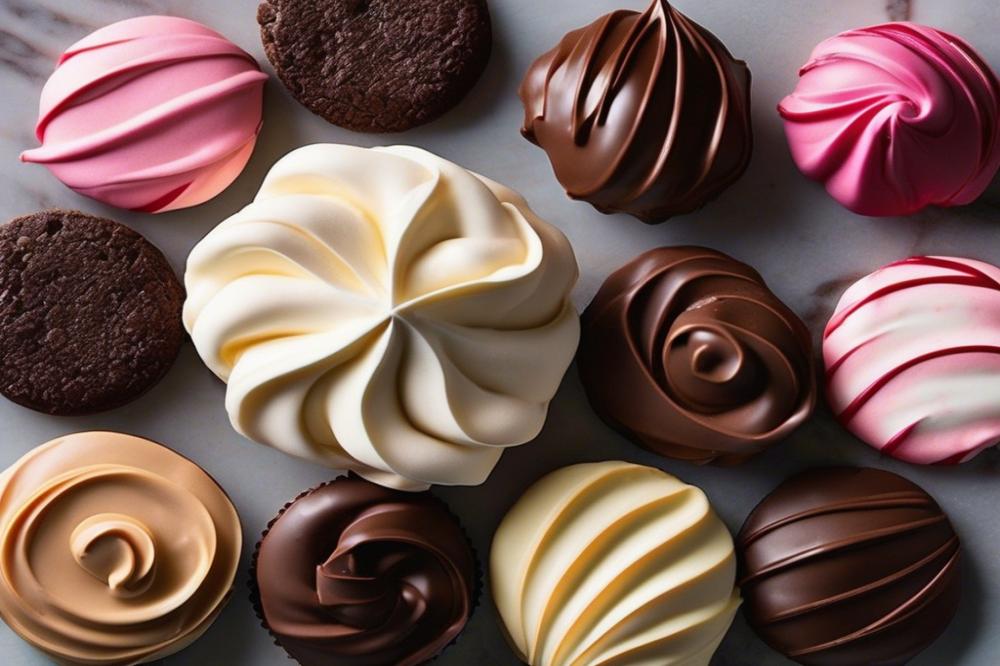
Meringue is a delightful dessert made from whipped egg whites and sugar. This mixture creates a light and airy texture. It is often used in various recipes, including cookies, cakes, and toppings. The two main components of meringue—egg whites and sugar—play crucial roles in achieving the right texture. Egg whites provide structure and stability, while sugar adds sweetness and helps create a crispy finish.
The whipping process is important. As you beat the egg whites, they transform into a frothy mixture. The sugar should be added gradually to achieve the best results. Gradual incorporation allows the sugar to dissolve properly, which leads to a glossy and smooth consistency. This is essential for creating the perfect cookie texture in your chocolate meringue cookies.
Types of Meringue
Three types of meringue exist: French, Italian, and Swiss. French meringue is the most basic and widely used method. Simply whip the egg whites until soft peaks form, then add sugar slowly. This type of meringue is often used for cookies and pie toppings.
Italian meringue involves cooking sugar syrup and then combining it with whipped egg whites. This method creates a very stable meringue. Bakers often use Italian meringue for frosting because it holds up well and has a smooth texture.
Swiss meringue is made by gently heating egg whites and sugar together over a double boiler. The sugar dissolves, and then the mixture is whipped until it forms stiff peaks. This type is also stable and offers a silky texture. Understanding these types of meringue can help you decide which one to use for your baking needs.
For the best results, always pay attention to the oven temperature. A low temperature ensures that the meringue dries out without becoming brown. This is key for achieving that crisp finish. Baking meringue may take time, but the end result is well worth the effort.
Ingredients for Chocolate Meringue Cookies
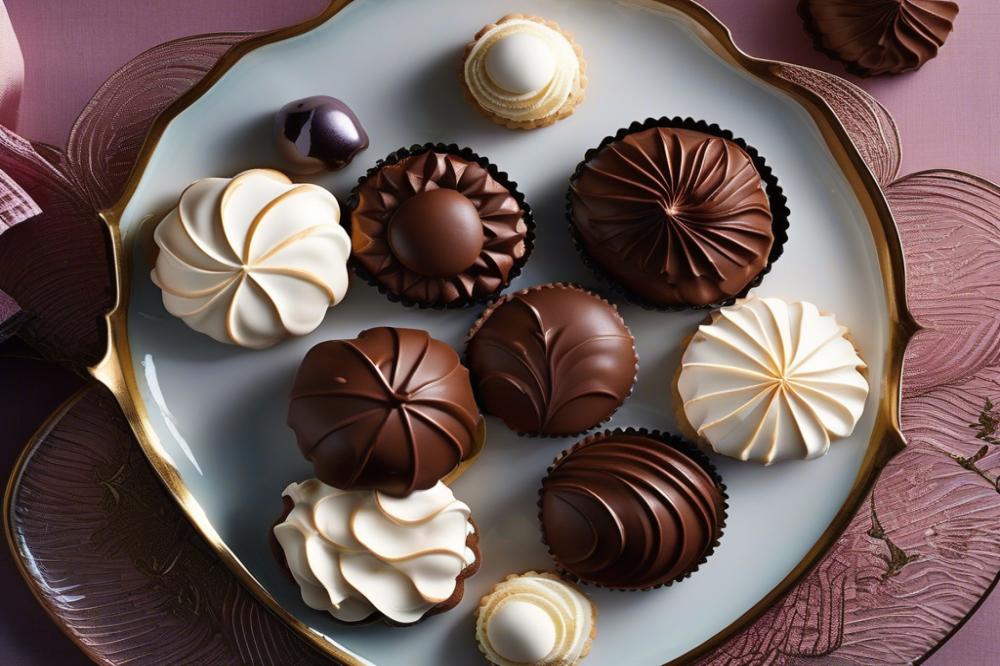
Baking delicious chocolate meringue cookies requires a precise selection of ingredients. Gather these essential items to create a delightful dessert that satisfies any sweet tooth.
- Egg whites: 3 large egg whites are necessary for the perfect meringue base. They should be at room temperature for better whipping.
- Granulated sugar: 1 cup of sugar provides sweetness and stability to the meringue. Choose fine sugar for the best texture.
- Cocoa powder: 1/4 cup of unsweetened cocoa powder adds the rich chocolate flavor. Opt for high-quality cocoa for deeper taste.
- Vanilla extract: 1 teaspoon offers aromatic notes that complement the chocolate wonderfully. It enhances the overall flavor profile.
- Optional additions: If desired, stir in 1/2 cup of chocolate chips or chopped nuts. These can add crunchy elements and extra richness.
High-quality ingredients significantly impact the final cookie texture and flavor. Fresh egg whites whip up more easily, creating a light and airy meringue. Using pure vanilla extract will also elevate the meringue’s overall taste. Selecting premium cocoa powder can make your cookies stand out with an intense chocolate flavor.
Pay attention to the sugar as well. Utilizing fine granulated sugar helps dissolve more efficiently, ensuring a smooth consistency in the meringue. Avoiding grainy textures is key when baking these cookies. Overall, quality ingredients lay the foundation for outstanding recipes.
Lastly, consider how the oven temperature affects the finished product. It is crucial to bake these cookies at a low temperature to achieve that crisp finish. Baking at 200°F (93°C) promotes even cooking without burning the delicate meringue.
Preparation Steps
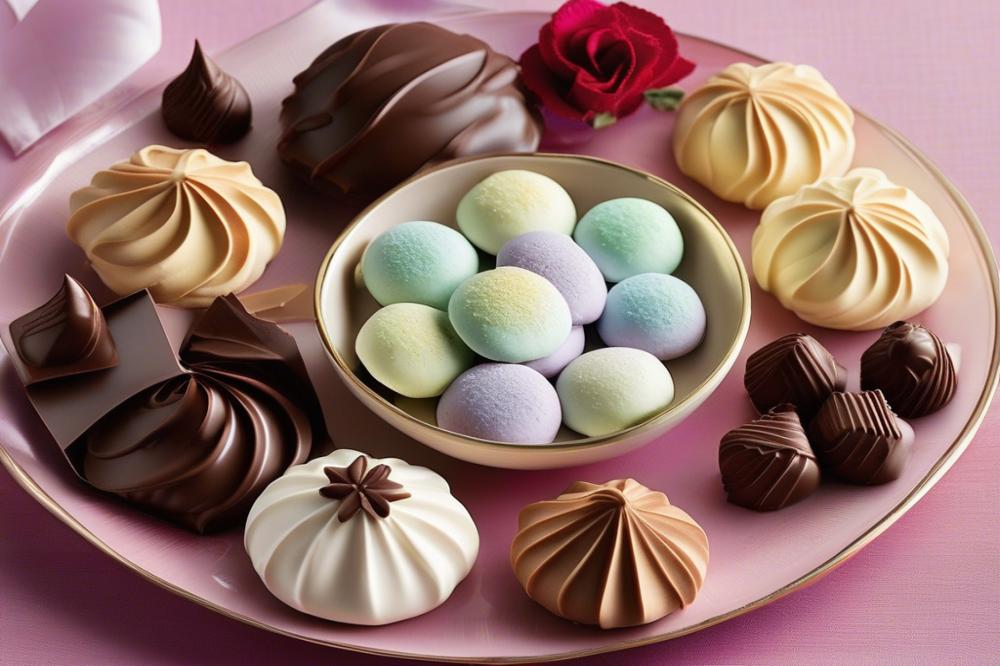
Creating delightful chocolate meringue cookies requires careful attention and technique. Begin by gathering your ingredients. Fresh egg whites are crucial for a successful meringue. You want them to be at room temperature for better whipping. Clean bowls and utensils also matter. Any trace of fat can ruin your meringue.
Whipping Egg Whites: Tips for Achieving Stiff Peaks
Start whipping the egg whites at a medium speed. Watch closely as the texture changes. After about a minute, the mixture should start becoming foamy. Increase the speed to high. Consistency is important here. The goal is to reach stiff peaks, which means the egg whites hold their shape. This can take around 3 to 5 minutes. If you flip the bowl upside down and the meringue doesn’t fall out, you’ve succeeded. Remember, it’s all about patience.
Gradually Adding Sugar: Importance of Consistency
Once you achieve the desired whip, it’s time to add sugar. Do this slowly, just a tablespoon at a time. Adding sugar too quickly can deflate the meringue. Continue beating after each addition until the sugar fully dissolves. You’ll know it’s ready when the meringue appears glossy and smooth. A well-mixed meringue helps create the perfect cookie texture.
Incorporating Cocoa Powder and Other Ingredients
Now, sift in cocoa powder carefully. This adds that rich chocolate flavor. Stir gently to combine, which avoids deflating the meringue. Other ingredients like vanilla extract can enhance the taste as well. Use a spatula to fold them in. Try to keep the mixture light and airy. Take care not to overmix; you want the volume to remain intact.
Guidelines for Mixing and Folding to Maintain Texture
The folding process is crucial. You should use a figure-eight motion, gently lifting the meringue. This technique helps to incorporate ingredients without losing air. After mixing, the final batter should look thick and somewhat similar to frosting. To prepare for baking, line a baking sheet with parchment paper. Use a piping bag or a spoon to place dollops of batter onto the sheet. Leave some space between each one. Meringue cookies expand slightly in the oven.
Set the oven temperature low, around 200°F (93°C). Baking low and slow is key to a crisp finish. Baking time usually ranges from 1.5 to 2 hours. Patience will reward you with delightful dessert treats that have a shell-like crispiness. Once finished, let them cool completely on the sheet. This allows the meringue to set properly. Happy baking!
Baking Techniques for Crisp Finish
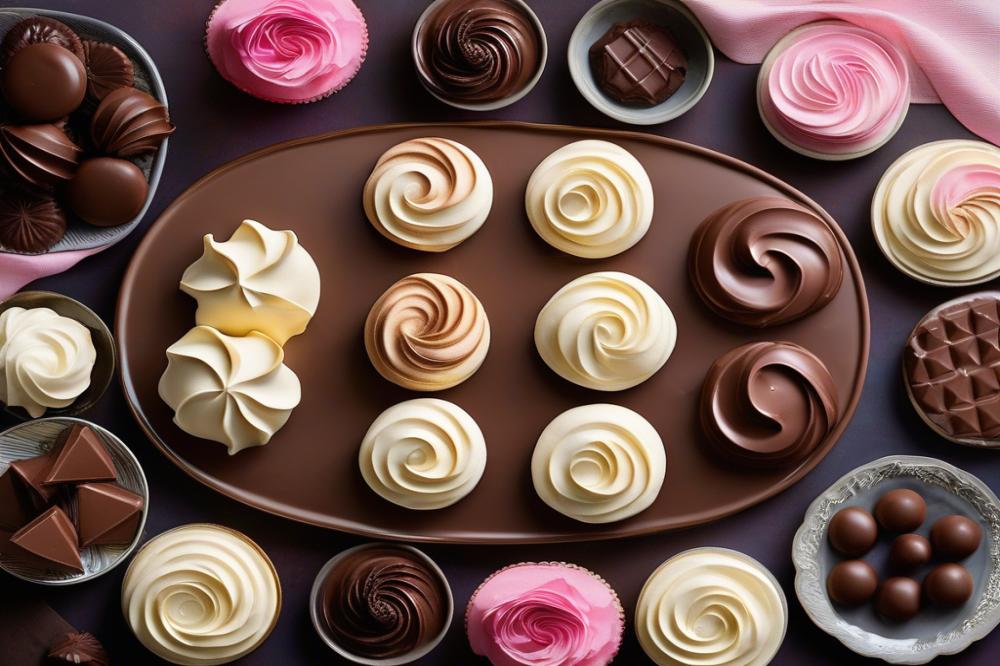
Getting the perfect crisp finish when baking meringue cookies requires attention to several key factors. Start by preheating your oven to a low temperature. An ideal range is between 200°F and 225°F. Baking at a lower temperature helps to slowly dry out the cookies while avoiding any burn.
Timing plays a crucial role in the baking process. Aim for a baking duration of around one hour. However, this can vary based on your oven and cookie size. Monitor the cookies closely as they bake. You want them to look set and slightly puffed. A light golden hue signals they’re close to done.
When it comes to achieving that desired crisp texture, several tips can make a difference. First, whip your egg whites to stiff peaks before adding sugar. This will help create a stable meringue. Gradually incorporate the sugar while continuing to whip. The mixture should feel smooth and glossy when ready. Additionally, mixing in the chocolate should be done gently to keep air in the mixture.
Cooling methods also affect the integrity of the cookies. Once removed from the oven, let them sit on the baking sheet for a few minutes. After that, transfer them to a wire rack. This allows air to circulate around the cookies, preventing sogginess. Do not cover them while they cool; they need exposure to the air for the best results.
Serving Suggestions and Variations
Chocolate meringue cookies are delightful on their own, but there are many ways to serve them for a special touch. Plating these treats on a decorative dessert stand adds elegance. Dusting them with powdered sugar right before serving creates a lovely visual. You could even arrange them in a clear glass jar for a charming display at a gathering.
These cookies pair wonderfully with a variety of beverages. A cup of hot cocoa complements the rich chocolate flavor beautifully. If you enjoy tea, a mild herbal blend can balance the sweetness, while coffee offers a nice contrast. For dessert lovers, serving these meringue cookies alongside a scoop of vanilla ice cream can be a delightful combination.
Possible Variations
Experimenting with flavors can yield exciting results. Adding a hint of peppermint extract to the meringue gives a festive twist. You could also swirl in raspberry puree for a fruity touch. For a spiced version, mixing in cinnamon or nutmeg provides warmth. Flexibility with shapes is also fun; using a piping bag can create elegant swirls or fun shapes that are visually appealing.
To elevate the appeal further, consider additional toppings. Drizzling melted dark chocolate over the cooled cookies creates a rich layer. Chopped nuts or toasted coconut can add texture. Sprinkles can bring a pop of color and make the cookies more inviting to younger audiences. Baking at the right oven temperature is crucial for optimal cookie texture, so keep that in mind with any variations.
Don’t hesitate to explore different recipes. Mixing in other ingredients, like dried fruits or citrus zest, can introduce new dimensions to the classic treat. With so many options at your disposal, these cookies can be modified to suit any occasion or preference.
Troubleshooting Common Issues
Baking meringue cookies can sometimes lead to unexpected problems. Many people notice cracks on the surface, a chewy texture, or that the cookies didn’t dry out completely. Let’s talk about these common issues and how to fix them.
Cracking
Cracks can form on the surface of meringue due to a few reasons. Often, rapid temperature changes in the oven can cause this issue. When you first place your cookies inside, the heat can shock the meringue if the oven temperature is too high. Another factor is overbeating the egg whites. Overbeaten whites create a structure that might not hold together well during the baking process.
To combat cracks, keep a close eye on your oven temperature. Setting it to 200°F is usually best for baking meringue. Gradual heat helps stabilize the meringue and prevents sudden expansion. Using a lower temperature often leads to a better finish.
Chewy Texture
The texture of your cookies impacts their overall appeal. If your meringue cookies are chewy instead of crisp, it could be because the sugar has not dissolved properly. Undissolved sugar can create a grainy texture that affects the final product. Properly whipping the egg whites until they form stiff peaks is crucial.
To avoid this chewy issue, mix the sugar with the egg whites gradually. Combine them slowly as you beat the whites. Use fine sugar or confectioner’s sugar for smoother results. Another tip is to bake the cookies longer and keep them in the oven even after the baking time ends. Turning off the oven and letting them sit inside allows any excess moisture to evaporate.
Incomplete Drying
Sometimes, cookies may seem done but still feel soft or sticky. This usually means they have not dried out completely. Incomplete drying can occur when the baking time is too short or the humidity levels in your kitchen are high. Meringue is sensitive to moisture, so a humid environment can affect the drying process.
To remedy this, make sure you are baking during a dry day if possible. If humidity is an issue, consider using a dehydrator method by keeping the oven door slightly ajar after baking. This technique promotes airflow and encourages drying. Keeping a close watch on your cookies as they bake will also help in gauging when they are ready.
Using these tips and solutions, you can overcome common problems with meringue and enjoy delightful chocolate cookies with a perfect texture and finish.
Final Thoughts
The Allure of Meringue Treats
Chocolate meringue cookies hold a special place in the heart of dessert lovers. Their combination of a light, airy texture and a rich chocolatey flavor makes each bite a delight. The contrast between the crisp exterior and the soft interior adds an enjoyable experience. Simple in their appearance, these treats can impress guests at any occasion.
Embrace the Joy of Baking
Baking is not just about following recipes—it’s a creative process. Each batch offers a chance to learn, grow, and try something different. Feel free to tweak ingredients or add your twist. Experimenting can lead to delightful surprises. Think about incorporating various flavors or textures. The possibilities are almost endless, and the journey is as rewarding as the final product.
Share Your Baking Adventures
Encouragement comes from sharing experiences. When you create your own version of these cookies, don’t hold back! Sharing your stories enriches the community. Fellow bakers would love to hear what worked for you or any unique ideas you tried. Connect with others and inspire them through your baking journey. Your adventures can motivate others to dive into their own culinary creations.

